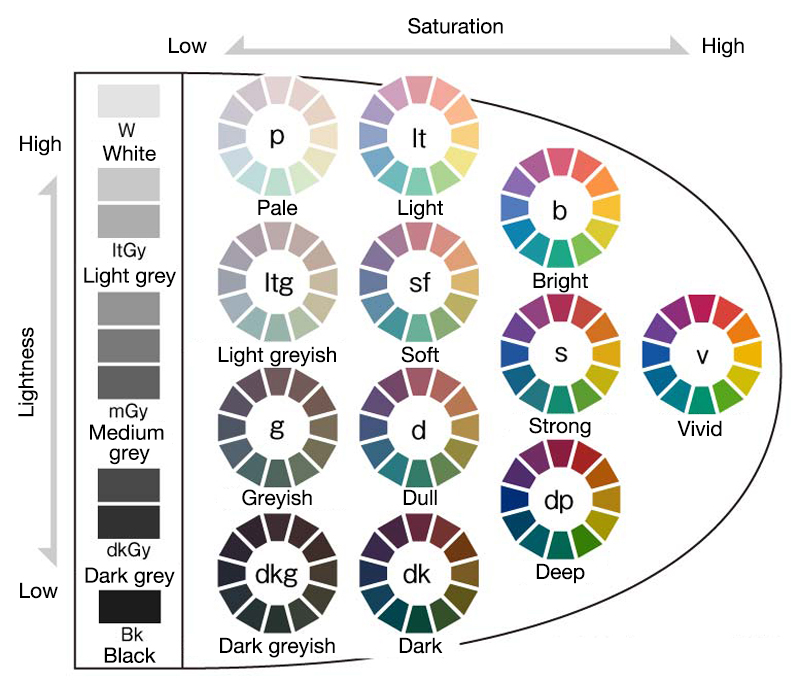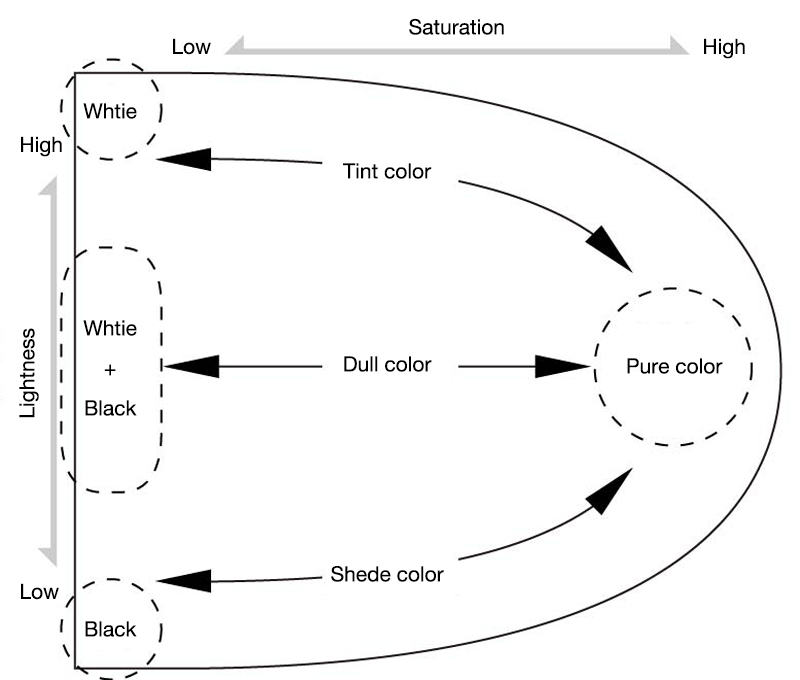Tone
色調
Shikichou
CATEGORIES
Tone (or color tone) generally refers to the differences in tints and shades produced from the relationship between lightness and saturation.
All colors have a tone such as bright and dark, deep and pale, strong and weak, etc. Light colors can be described as being light-toned, dark colors as dark-toned and colors in between as medium-toned. Chromatic colors with the greatest saturation are called pure colors. Colors produced by mixing these with black or white are clear colors, and those mixed with grey are turbid colors.
Because tone is affected by the proportion of saturation and lightness, colors of different hues are considered to have the same tone if this proportion is the same.
The PCCS (Practical Color Coordinate System) of the Japan Color Research Institute categorizes colors by tone. It divides individual hues into 12 tones (vivid, soft, pale, etc.) based on the impressions they impart in terms of vividness. A vivid tone is a grouping that is close to a pure color. Raising the lightness produces a pale, light tone. Lowering the lightness produces a deep, dark tone described as dark greyish.
* The chart shown is only an approximate display of the relationship between colors and is not an accurate recreation. Colors also appear different depending on the viewing environment.
RELATED PAGES
 PCCS tone concept
PCCS tone concept

